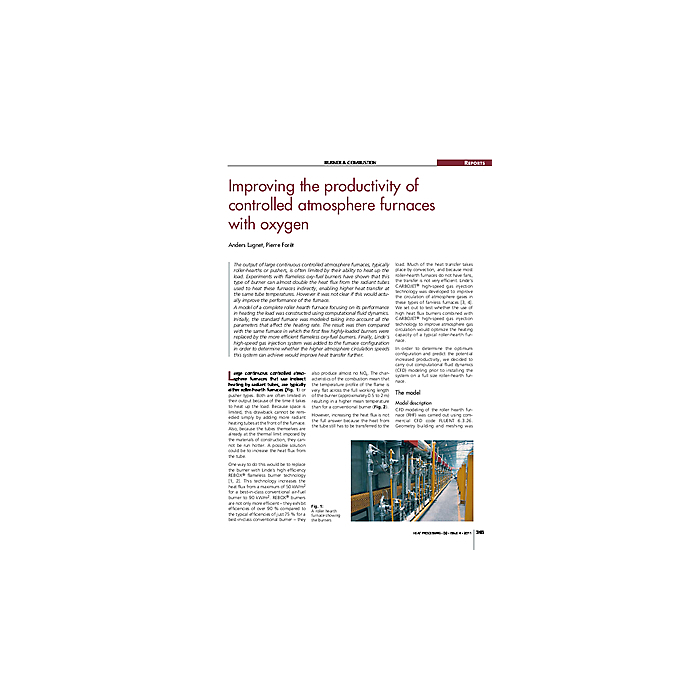Improving the productivity of controlled atmosphere furnaces with oxygen
4,90 €
Auf Lager
Artikelnummer
00541_2011_04_05
The output of large continuous controlled atmosphere furnaces, typically roller-hearths or pushers, is often limited by their ability to heat up the load. Experiments with flameless oxy-fuel burners have shown that this type of burner can almost double the heat flux from the radiant tubes used to heat these furnaces indirectly, enabling higher heat transfer at the same tube temperatures. However it was not clear if this would actually improve the performance of the furnace. A model of a complete roller hearth furnace focusing on its performance in heating the load was constructed using computational fluid dynamics. Initially, the standard furnace was modeled taking into account all the parameters that affect the heating rate. The result was then compared with the same furnace in which the first few highly-loaded burners were replaced by the more efficient flameless oxy-fuel burners. Finally, Linde's high-speed gas injection system was added to the furnace configuration in order to determine whether the higher atmosphere circulation speeds this system can achieve would improve heat transfer further.
| Autoren | Anders Lugnet/Pierre Forêt |
|---|---|
| Erscheinungsdatum | 01.04.2011 |
| Format | |
| Zeitschrift | heat processing - Issue 04 2011 |
| Verlag | Vulkan-Verlag GmbH |
| Sprache | English |
| Seitenzahl | 4 |
| Titel | Improving the productivity of controlled atmosphere furnaces with oxygen |
| Beschreibung | The output of large continuous controlled atmosphere furnaces, typically roller-hearths or pushers, is often limited by their ability to heat up the load. Experiments with flameless oxy-fuel burners have shown that this type of burner can almost double the heat flux from the radiant tubes used to heat these furnaces indirectly, enabling higher heat transfer at the same tube temperatures. However it was not clear if this would actually improve the performance of the furnace. A model of a complete roller hearth furnace focusing on its performance in heating the load was constructed using computational fluid dynamics. Initially, the standard furnace was modeled taking into account all the parameters that affect the heating rate. The result was then compared with the same furnace in which the first few highly-loaded burners were replaced by the more efficient flameless oxy-fuel burners. Finally, Linde's high-speed gas injection system was added to the furnace configuration in order to determine whether the higher atmosphere circulation speeds this system can achieve would improve heat transfer further. |
Eigene Bewertung schreiben


